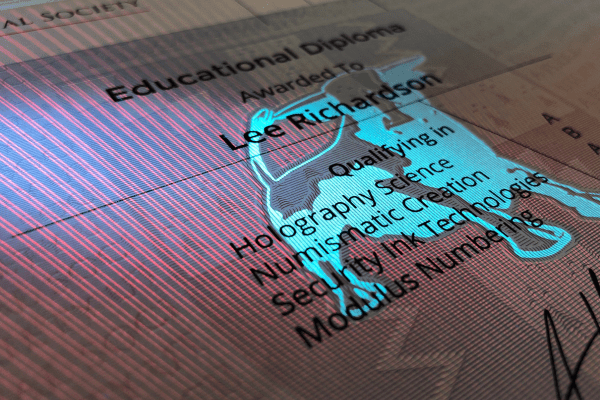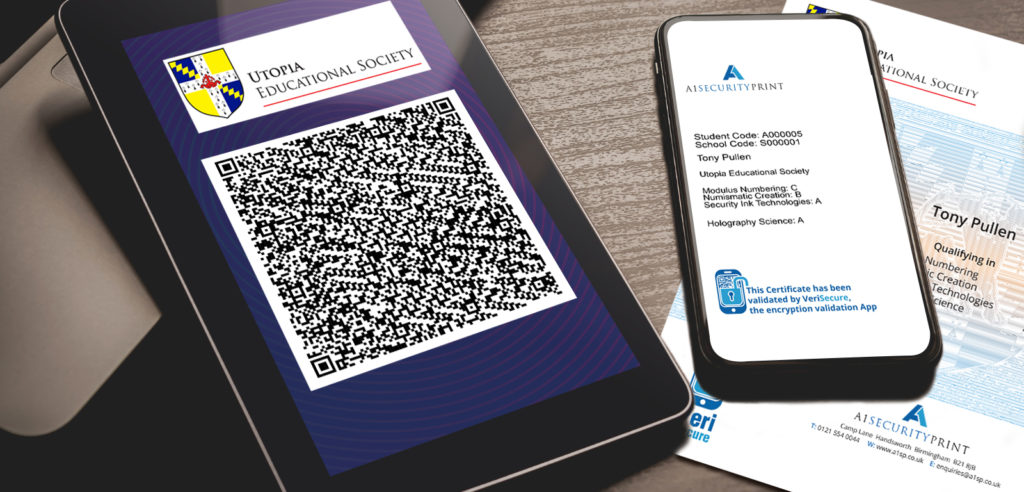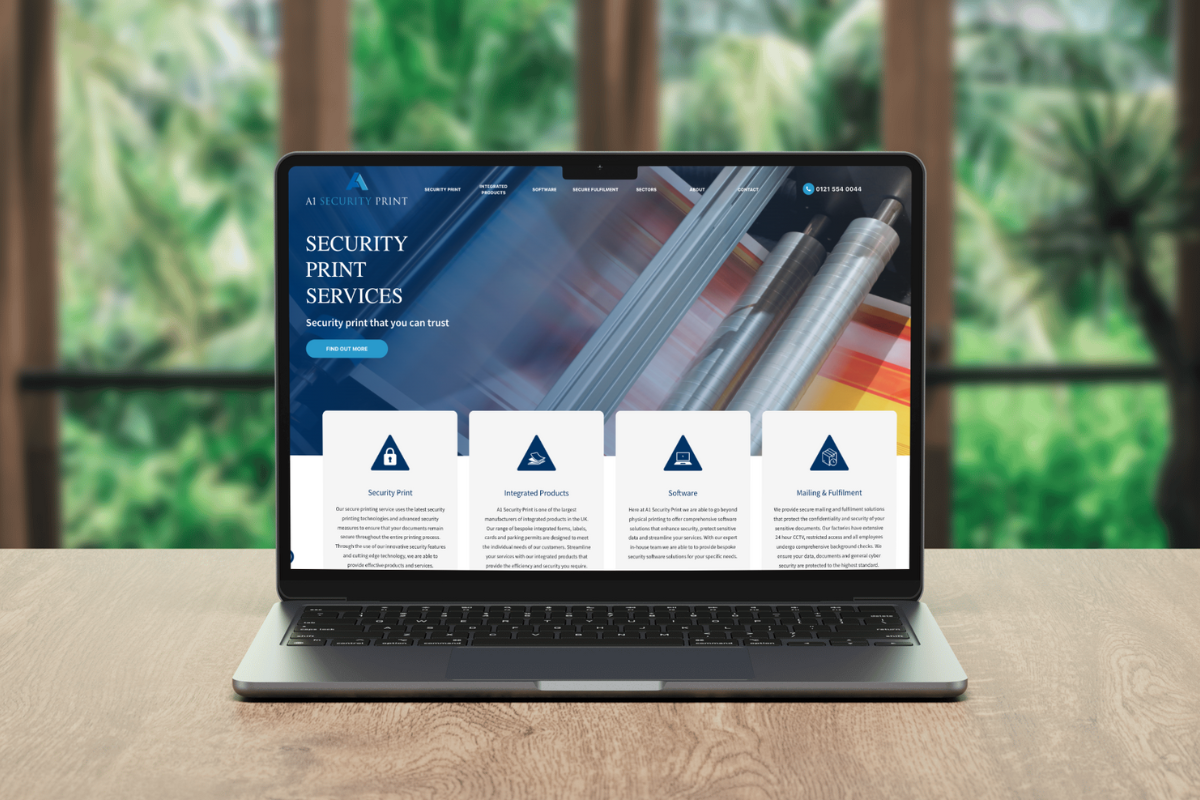BLOG
19 July 2021
What is Certificate Fraud and How Can you Prevent it?
The fraudulent reproduction of certificates has increased considerably in recent years, creating a huge headache for many organisations. Fake certificates can be used to secure employment in fields for which an individual is not qualified, damaging the reputation of businesses and awarding bodies and possibly even placing the public at risk, especially in industries such as healthcare.
The fraudulent reproduction of certificates has increased considerably in recent years, creating a huge headache for many organisations. Fake certificates can be used to secure employment in fields for which an individual is not qualified, damaging the reputation of businesses and awarding bodies and possibly even placing the public at risk, especially in industries such as healthcare.
The verification of an individual’s credentials before offering employment has been common practice for years. In the past referee would be contacted and identity checks carried out. However, with a steep rise in degree fraud over recent years, these conventional checks alone are no longer sufficient.
Degree fraud has existed since the invention of degrees, but it is only in the last ten years that ‘fake qualifications’ have started to become a universal issue. Perhaps this is due to the increased commercial value of qualifications in recent years. Modern technology such as the advent of desktop publishing, colour printers and other sophisticated technology means that fraudsters can gain access to more advanced forms of print and information than ever before. Moreover, there has been a significant rise in fake awarding institutions in the UK over recent years. According to The Guardian, despite being illegal, there are still twice as many “bogus” universities in the UK as genuine ones – more than anywhere else in Europe:
“Degree fraud is worrying news for higher education. Not only does it devalue a qualification from a UK institution, making a mockery of genuine students who go through our system, but it also, when unchallenged, offers an attractive alternative for a prospective fee-paying student, potentially reducing the amount of funds going into higher education.”
Here are some of the techniques that can be adopted by awarding bodies and universities to prevent degree fraud in their institutions:
Secure paper with watermark:
The first line of defence against the fraudulent copying of security documents is the base material, so it is vitally important to select the most appropriate paper for your document. We can create a bespoke watermark to your own design if required, to emphasise your brand and provide an increased level of protection. Alternatively, we offer our own restricted watermarked paper, which is not readily available in the marketplace. This offers an excellent balance between the cost benefits of a regular watermarked paper and the additional security benefits of a bespoke material. There are a range of additional features that can be added to any paper to improve the level of security in your document. Toner adhesion properties can be added to the paper to improve the way laser toner bonds to the base material. Visible and invisible fluorescent paper fibres can be added as a covert feature, making the paper even more difficult for fraudsters to acquire or reproduce. For the most prestigious of qualifications, we can add a bespoke thread embedded within your paper.
Security background designs:
These are created using specialist software and are designed to be difficult to reproduce. They typically contain guilloche patterns and ‘numismatic’ relief effects (that can be personalised to incorporate a customer’s name or logo, as shown in the example below). These techniques should be used in combination with other complex patterns, to produce security print designs that cannot easily be reproduced. Anti-photocopy features reveal a hidden message when photocopied, such as “Void” or “Fraud” and can be used to provide another level of protection against fraudulent alteration. Microtext is extremely small text, not readily visible to the naked eye, that can be used in place of lines in a form. It is used to authenticate a document with the aid of a magnifying glass.
Holograms:
If your document is vulnerable to fraudulent use, a hologram should be your preferred choice. They provide a unique level of protection against fraudulent conversion, offer a quick visible authentication, are widely recognised and cannot be duplicated through photocopying or computer scanning. Read more about hologram printing options here.
Inks:

A wide variety of security inks are available to use in conjunction with good security design to authenticate your certificates. It is important to understand what you are trying to achieve when selecting the right security inks. If your primary concern is detecting attempts to fraudulently alter your document, then we will always recommend the use of one or more tamper evident inks. If your main objective is authenticating a document, then an instant verification ink is advisable. In reality the majority of documents that are produced will use a combination of both types of security ink, alongside the other security features. Read more about security inks here.
Verification software:

The more valuable a document, the greater the perceived rewards for those who wish to seek financial gain from duplicating those documents. Despite the use of advanced printing techniques, fraudsters continue to become more sophisticated in their operations, and still manage to pass off their fake documents as the real thing, costing organisations thousands.
Software solutions provide additional security to your certificates, enabling you to confirm their authenticity in the field. Number validation systems can be verified using the device, platform and operating system that best suits your requirements. Talk to us about our PURL offerings, where an encrypted QR code printed on the secure certificate provides a link to a webpage that corroborates the information on the certificate and confirms that it has not been fraudulently altered.
As convincing as some fake documents may look to the untrained eye, one thing the counterfeiters will struggle to reproduce is our specially developed numbering solutions, that can only be validated with the appropriate software supplied by A1. We can provide this in the format best suited to your needs in the field.
Summary:
Awarding bodies and universities need to do everything they can to protect the time and investment made by honest students, as well as the reputation of UK educational institutions themselves.
A1 Security Print work closely with Universities and Awarding Bodies to understand the vulnerability of each certificate project to fraud, and consequently advise on the most appropriate security methods to prevent unauthorised use. Our expertise in document fraud prevention, detection and deterrence has assisted many organisations throughout the world to protect their brands and reputations from the damage created by fraud. We currently provide secure certificate printing solutions to over 100 UK institutions, as well as many international organisations.
To find out more, or to discuss how A1SP can help with all of your security printing requirements, call our friendly team on +44 (0) 121 554 0044 or leave us a message.



